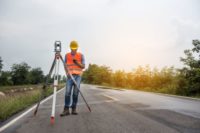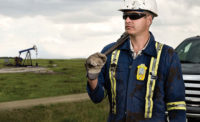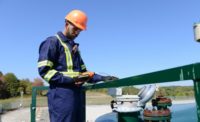By the time you finish reading this sentence, a person will have been hurt at work. By the time you sit down for dinner with your family, more than 14 people will have died on the job, leaving families and coworkers in mourning.
As a professional in the safety industry, you might already know these stats. After all, you’re responsible for your workers’ safety, making sure they’re not injured on your watch. But “safety” is a broad area that expands to include more and more each year. In 2020, safety responsibilities ballooned to include precautions for a global pandemic — and this trend doesn’t show any signs of stopping.
When responsibilities grow but your time and resources don’t, it can be hard to keep up with all the problems you need to solve. Our natural response, then, is to focus on the things we can control. Often, this looks like solving the most obvious problems first — taking care of the safety issues you can see on site. What’s left unaddressed, though, can still pose threats to your workers. In fact, the safety threats you can’t see in the locations you don’t visit often can pose the most risk to your workers.
Take lone workers, for example. Lone workers are any workers who are alone in a facility or any workers who travel to remote worksites. Almost every industry has lone workers, but they’re most common in construction, utilities, oil and gas, agriculture, and so on.
When lone workers encounter a threat, whether a gas hazard, dangerous weather, or a medical emergency, they can’t rely on peers nearby to help. They’re counting on you — and you alone. While with on-site workers, a quick glance can tell you whether it’s business as usual or all hands on deck, it’s different with lone workers.
Lone workers face different challenges than their on-site peers. Before you look for ways to improve their safety, you first need to understand the problems your lone workers face.
Working in remote areas
Lone workers frequent sites that are off the beaten path, often miles away from the nearest town. This means they don’t always have good cellular coverage. If they get hurt on the job and can’t call for help, the outlook is grim. Even if the injury is minor and they are still able to drive, they likely won’t be within a few minutes’ drive of a hospital. Without appropriate safety plans, lone workers are truly on their own.
Manual check-ins
OSHA’s guidance on working alone states that employers should account for workers throughout each shift “at regular intervals appropriate to the job assignment to ensure the employee’s safety and health; and at the end of the job assignment or at the end of the workshift, whichever occurs first.” If this sounds vague, it’s because it is.
Many companies have developed lone worker policies that require the worker to check in with a supervisor every hour or two. While this is certainly better than no check in at all, it poses a few problems. First, stopping work every hour is disruptive and requires task switching, which is proven to damage productivity. While manual check ins may only take about a minute a piece, the time adds up faster than you think. If workers check in five times a day, 20 days a month, for a team of 12, you’re losing 20 hours of valuable work time each month – and that’s before accounting for lost productivity in the minutes before and after the check ins.
Beyond that, a lot can happen in an hour. A worker could easily be hurt in the first five minutes after a check in, and you wouldn’t know for another 55 minutes. By then, it could be too late. And if a worker loses cell coverage, they’re truly off the grid and you won’t have any visibility into their safety.
No peer support
Most workers have a few trusted peers they can ask for help when they need it. When they forget a procedure they trained on many moons ago, they can always turn to someone nearby to jog their memory. But lone workers don’t have this luxury. They’re solely responsible for knowing exactly how to handle any situation that could arise. For seasoned workers, this can be a source of pride, but for newer workers, guesswork can lead to disaster.
Outdated safety equipment
Cloud computing and wireless technologies have brought safety tools into the digital era, but safety policies and budgets haven’t necessarily caught up. There are products on the market today that can connect lone workers quickly and easily to resolve all of these challenges and more, but companies need to invest in them first. Unfortunately, lone workers can be forgotten when it comes time for upgrades—the old saying, “out of sight, out of mind,” rings true here.
Solving the lone worker challenge
Looking out for the safety and well-being of your workers is a huge responsibility, but it’s one you don’t have to shoulder alone. Many devices, including personal gas detectors, have connectivity features built in to solve lone worker challenges.
Connected safety or live monitoring is the most popular solution because it relays information from the worker’s connected device back to cloud-based software that you can access anywhere in the world. From this software, you can see automatic updates, including gas readings, location, whether the worker is moving, and whether the worker has pressed a panic button to call for help. In an emergency, instant alerts with the worker’s name, location, and reason for the alarm make it easy to take the right action, fast. This gives the lone worker peace of mind that someone is always there to help.
Although connectivity features are a tremendous step forward in protecting your most vulnerable employees, not all connected devices deliver the same level of protection. Make sure that your lone worker monitoring solution includes cellular and satellite connectivity with automatic failover when a network is unavailable, integrates with your chosen live monitoring software, offers the features your workers need (panic button, gas detection, GPS tracking, etc.), and automatically uploads data in appropriate time intervals.
If you choose your lone worker monitoring system carefully, you can breathe easily knowing you have complete visibility into what your workers are experiencing, even when they’re miles away.






